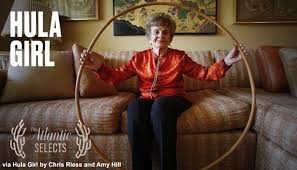DOING THE HOOP
Born Joan Manning in Sydney, Australia, her father, Claude, was a property broker. Her mother was Ethel Hallandal, a homemaker.
Joan was the middle of three children. She wanted to be a film star when she grew up.
When Joan left school, she became a swimsuit model. As she was so tiny, she got the nickname, ‘Pocket Venus’.
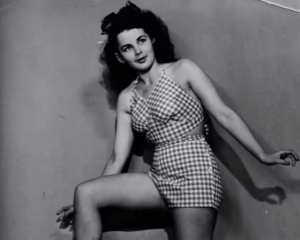
During the Second World War, Joan appeared on the front cover of Pix Magazine, who described her as, ‘A typical Australian holiday girl.’ They praised her for her contribution to the war effort – knitting socks and writing letters to servicemen abroad.
On one occasion, a picture of herself was sent back to her from Tobruk, with the words, ‘You make us forget Libya’.
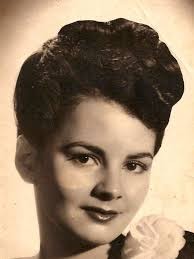
In 1945, Joan met US Army pilot, Wayne Anderson, on Bondi Beach.

She was unimpressed – until she saw him that evening at a dance, dressed in his full uniform. She fell in love.
They were married four months later, and Joan became a GI bride.
After the war, the couple moved to Pasadena, California.
In the USA, they were to have four children – Warren, Gary, Carl and Loralyn.
When they were living in the States, Wayne started designing wooden machinery.
Joan briefly returned to modelling, signing for the Blue Book agency. She did one photo shoot with Norma Jeane Dougherty, who later reinvented herself as Marilyn Monroe.
Joan’s family believed she once competed against Norma Jeane in a beauty contest.
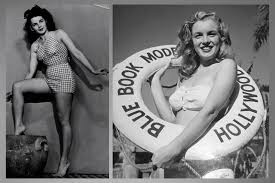
In 1956, Joan paid her first visit in eleven years to her mother in Sydney, without Wayne who was working, leaving him in charge of four children at Christmas time.
Arriving in Australia, Joan was amazed to see people on the streets and on the beach, swirling hoops around their hips -‘In Elvis Presley style’.
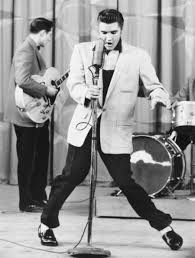
Joan asked what was going on. She was told, “We are doing the hoop.”
She tried it herself. “It looked like fun, but it was really hard.”
Joan returned to California and described it to Wayne. He was puzzled so she asked her mother to send her a hoop.
It was a bamboo hoop and her mother wrapped it in brown paper. Joan’s mailman was perplexed. “Why would anyone send something like this, all the way from Australia?” Years later, Joan wondered if he realised he had played a tiny part in its success.
Joan practised the hoop at home until she had mastered it. She gave a demonstration to friends at a dinner party. One of the guests said it looked as though she was doing the Hawaiian Hula dance. Joan decided to call it the ‘Hula Hoop’.
Wayne thought it might have marketing potential. He had recently undertaken work for a toy manufacturer, Arthur ‘Spud’ Melin, who ran a company called Wham-O.
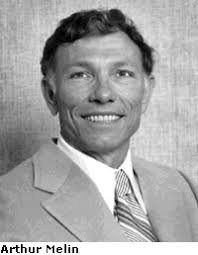
The Andersons met Melin in his company car park at San Gabriel. When they showed him the hula hoop, Melin said, “Looks like it has some merit. If it makes money for us, it’s going to make money for you.”
The agreement was settled with a gentleman’s handshake. Wayne trusted Melin as he had worked with him before. There were no other witnesses to the deal.
Melin manufactured the hula hoop with brightly coloured polyethylene. They retailed at $1.98.
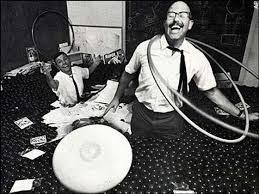
He tried to take out a patent but failed to get one as both the Ancient Egyptians and Greeks had used a similar toy – and they had also been very popular in England in the fourteenth century, when they were known as ‘Ganymede Rolling-a-Hoop’.
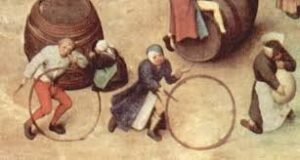
However, Melin did manage to get a trademark on the name ‘Hula Hoop’.
The craze took off immediately in the USA. 25 million were sold in the first two months and after a year it was over 100 million. They became extremely popular throughout the world (except in France, Japan and the USSR).
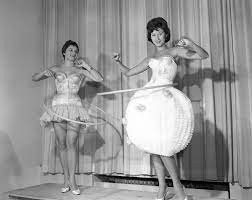
A designer called Jacques de Saint-Phalle made his own version, which were the ones sold in France.
In Japan, they were banned for being indecent and in the Soviet Union they were seen as evidence of western decadence.
Despite the enormous success, the Andersons never heard from Melin. All attempts to contact him failed. He never replied to letters, never answered the phone and he was never in his office when they visited. Jean said, “They kept putting us off.”
Eventually, very frustrated, the Andersons filed a lawsuit against Melin. By now it was 1961, and the hula hoop craze had died away.
In court, Melin initially claimed the hula hoop had been sent to him by, “An Australian friend.” Joan said this hurt her more than anything. “He was no friend of mine.”
Then, Melin changed his story, and said he had discovered the hula hoop whilst on a business trip to Australia.
The Andersons said the deal they had agreed was to be paid one penny (one cent) for every hula hoop that was sold.
They were awarded compensation of $6,000 – a meagre sum compared to what they could have earned, but by now the Wham-O company were heavily in debt.
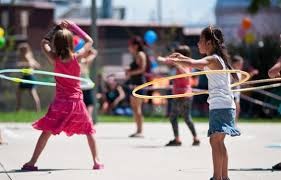
The Andersons were still not given any recognition as to their role in the story.
Despite everything, neither of the Andersons ever resented what had happened to them. Wayne was extremely successful in his woodworking business, and they were very happy together.
Daughter Loralyn said, “It was never a big deal in our family. My parents went on with their lives. They knew they messed up with the business deal.”
Joan had even bought each of her four children a hula hoop.
Wayne died in 2007, aged 87.
Joan reflected, “Why be angry with something you can’t change? The world isn’t fair, but life goes on. I had a great life. My husband lived to be eighty-seven and we had sixty-three wonderful years together. Happiness is the best revenge.”
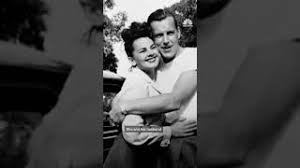
In her old age, Joan continued to be energetic and full of life. She played tennis regularly into her nineties and also swam in the sea. She tried zip wiring and parasailing. Joan was still ballroom dancing aged one hundred.
In 2017, her daughter Loralyn was having a meal with friends in a restaurant just outside San Diego. She recounted her mother’s story.
Sitting at the next table was the mother of documentary film maker Amy Hill. The lady heard the tale and approached Loralyn. “Honey, I’m sorry but I’ve been eavesdropping.”
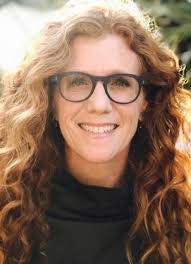
They swapped phone numbers – and ultimately Amy and her husband, Chris Reiss, made a short film about Joan. Amy interviewed Joan for hours – and they became firm friends.
The film was called ‘Hula Girl’ and told how Joan had been robbed, not only of financial reward but also the credit of having introduced the hula hoop to the USA. In it, Joan said, “When you don’t know a lot about business you kind of trust somebody you’re turning it over to – and just hope they’ll do the right thing. But they didn’t.”
The film was first shown at the Tribeca Film Festival and was such a success that it went to New York. Joan was invited to the first showing.
The red carpet was rolled out for Joan. At the end of the film showing, she got a standing ovation. There was a Question and Answer session and people were coming up to Joan asking for her autograph or to have a selfie with her.
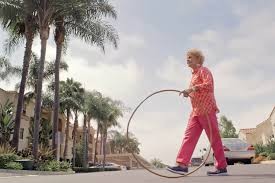
Joan whispered to Loralyn, “Oh God. I don’t really want to be famous.”
Hula Girl went on to become a popular film throughout the USA.
However, Loralyn said afterwards, “Mom was pretty happy that she got the recognition in the end and that she was able to bring so much joy to people around the world. How can you hula hoop without being happy?”
Joan’s son, Carl, predeceased her, dying in 2023.
Joan met the World Hula Hoop champion, Somalian/Australian circus performer, Marawa, who is in the Guinness Book of Records. The two of them got on like a house on fire. Marawa said, “If I can be like Joan when I’m a hundred, then I’ll be happy. Meeting her made me realise I’ve made the right career choice for a long life.”
Other hula hoop stars flocked to Joan’s one hundredth birthday party, and she loved meeting them.
Joan was asked if she had kept her original hoop. She admitted it was still in her house. “It’s gathering a little dust now. I still us it sometimes to keep moving – but not as much as I should.”
Joan died in a care home in Carlsbad, California, aged 101. Her family said, “She lived a wonderful life.”
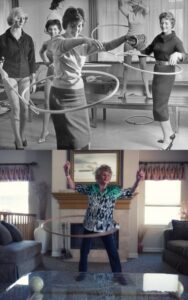
RIP – Reputation Is (finally) Preserved

